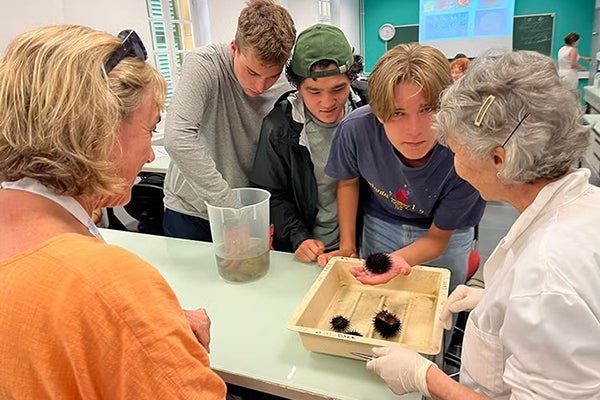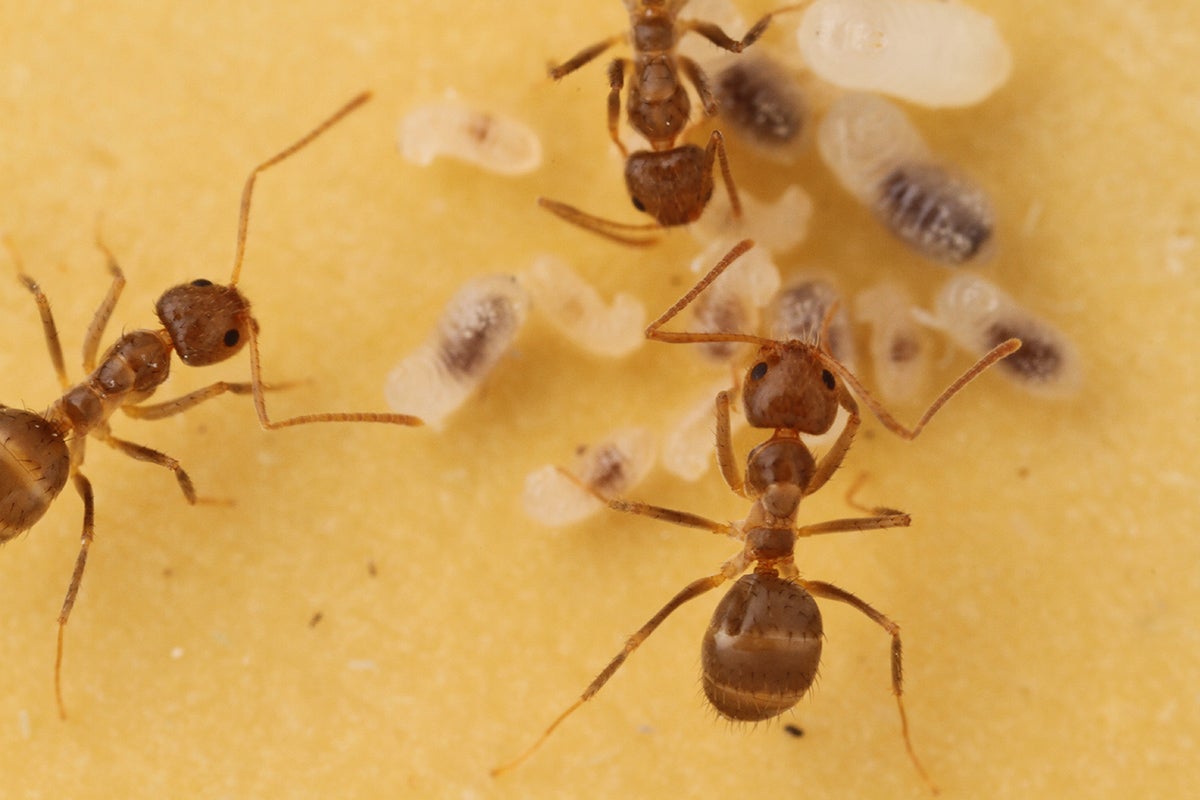Genes That ‘Don’t Play Well Together’ Drive Development of Distinct Species
Justin Havird, Erik Iverson and their colleagues have identified genes involved in hybrid incompatibility in swordtail fishes.

The sheepshead swordtail fish (Xiphophorus birchmanni). Photo credit: Dan Powell.
Researchers have gained new insights into how the rise of reproductive barriers between organisms creates new species and drives the incredible diversification of life on Earth.
One major way that creatures become distinct from each other as separate species is through “hybrid incompatibility”—when the offspring of two intermingling and still closely-related species have health problems or reduced reproductive capabilities. A familiar example is a mule, the sterile offspring of a male donkey and a female horse.
Pinpointing how hybrid incompatibility operates at the genetic level, however, has long eluded scientists and left fundamental questions unanswered at the heart of the origin of species.
Now, working with populations of swordtail fishes native to Mexico, researchers from Stanford University, The University of Texas at Austin and elsewhere have discovered that a set of genes, known as Complex I genes, are involved in major developmental issues and early deaths of hybrid fish sired by two swordtail species. The paper summarizing this research was published this month in the journal Nature.
Justin Havird and Erik Iverson at UT Austin demonstrated how this particular genetic incompatibility between the two species translates to health problems in hybrid offspring. They showed that mitochondria—the powerhouses of cells—in the offspring have a hard time consuming oxygen and generating energy.
“This effect is trickling up to the whole-organism level,” said Iverson, a Ph.D. student in Havird’s lab. “The consumption of oxygen across the whole body is compromised. That's why development arrests at a certain point, in those individuals that are completely incompatible and never make it to adulthood.”
Complex I genes are found in both the nucleus and the mitochondria of a cell. They have to work together to form a key enzyme involved in energy production. In the particular hybrid incompatibility they studied, a gene from the mitochondria of one parent is mismatched with a gene from the nucleus of the other parent. This is called a mitonuclear incompatibility.
“Even though mitochondria don’t have very many genes, and they’ve largely been ignored by evolutionary biologists, we think they could play a disproportionate role in creating new species,” said Havird, an assistant professor of integrative biology at UT Austin. “They’re small, but they’re mighty.”
The research was led by Molly Schumer, an assistant professor of biology in the Stanford School of Humanities and Sciences, and by Ben Moran, a doctoral student in her lab.
“As biologists, we’re really interested in the diversity of life we see around us, and we want to understand how that diversity is happening at the genetic level,” Schumer said. “But it’s been very difficult to get empirical data on individual genes that cause the problems of hybrid incompatibility. With this swordtail study, we had the opportunity to understand the whole arc of genes impacting an organism.”

The sheepshead swordtail fish species (pictured left) has a reduced sword, a large body, and unique body patterning and coloration compared to its cousin, the highland swordtail (pictured center). The hybrid of these two species (pictured right) displays a blend of these characteristics. Photo credit: Dan Powell.
The fish at the center of the research are two closely related species, Xiphophorus birchmanni (also known as sheepshead swordtails) and Xiphophorus malinche (or highland swordtails). The two fish species have evolved to occupy different areas in the rivers they share in central Mexico; X. malinche opts for higher-elevation headwaters and X. birchmanni prefers the warmer, lower-elevation downstream regions.
Starting in the 1990s, researchers began documenting unusual-looking blended versions of these fish living in rivers, suggesting hybridization, which was later confirmed through genetic testing.
To identify potential genes of interest, Moran, Schumer and colleagues sequenced swordtail genomes to establish the DNA fingerprints associated with each species. Prior research by Schumer suggested that combinations of mitochondrial genes and nuclear genes that must work together to perform a critical function could be good candidates for causing hybrid incompatibilities in these fish. The researchers zeroed in on the genes that code for the proteins that make up Complex I—a highly intricate enzyme needed for producing cellular “fuel” in mitochondria. The research team discovered that certain combinations of these Complex I genes were never found together in living adults—suggesting they displayed hybrid incompatibility.
In the future, the UT and Stanford groups hope to continue collaborating to answer further questions about these genes, such as the role that temperature might have played in driving genetic divergence between these species.
The research was funded by the National Science Foundation, the National Institutes of Health, the Howard Hughes Medical Institute and the Alfred P. Sloan Foundation.
This news post is based in part on an article written by Adam Hadhazy at Stanford University



